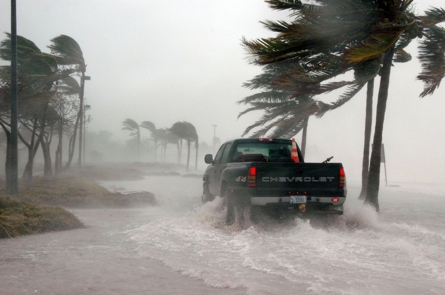It's funny how some holidays get started. Take Rain Day. A farmer mentioned to a pharmacist in Waynesburg, PA that it always seems to rain on his birthday (July 29th). The pharmacist took it upon himself to start recording how much it rained on July 29th every year after that. When he passed, his brother took up the task and continued to record the rainfall on every July 29th. A local newsman noticed this and started reporting on this local story. Eventually the casual remark about rain on a birthday became a holiday. Waynesburg has a festival every year to celebrate this interesting holiday rain or shine!
Of course too much rain leads to flooding. How do you prepare for flash flooding when those sudden summer storms hit your area?
1. Know if you are in a flood zone. FEMA keeps a map to help people determine if they live or work in a flood zone. You can check here if you are not sure (https://conta.cc/3zvUm0q).
2. Be sure you have a way to listen to weather warnings and alerts when you notice a summer storm coming. Bad storms will knock out your power so don't depend on the living room TV to do this. Listen carefully to what they are saying. A WATCH means conditions are ripe for this type of event to occur (tornado, flooding, etc.). A WARNING means this event is already happening somewhere in the area they are talking about so take shelter now.
3. If you do live in a flood zone, have an emergency plan ready that includes possible evacuation. If you do not live in a flood zone, have your emergency plan include sheltering in place since these storms are still dangerous with hail, lightning and heavy rain flowing to a flood zone. Be sure your plan includes the following:
a. Bring inside all loose items that can be blown or washed into hazardous situations such as toys and patio furniture.
b. Move anything important or irreplaceable upstairs so if the lowest level floods, they will be protected.
c. Unplug everything that you don't need right now. Lightning from summer storms frequently travels up power lines causing surges in your home. This can damage your electronics or start and electrical fire.
d. Have a flood emergency kit ready including a First Aid kit, weather emergency radio, any medications anyone including pets need, bottled water, non-perishable food, flashlight with fresh batteries, multi-purpose tool, duct tape, and important papers including an emergency contact list including your insurance company and family members. A water-proof tote perfect for a flood emergency kit. A Red Cross recommended emergency kit packing list can be found here (https://conta.cc/3BfQnGB).
4. After the storm passes, there are also some key safety tips to follow:
a. Never walk or drive through water more than a few inches or where you can't see the bottom. As little as 6 inches of flowing water is enough to knock a person down or strand a car. It can also be hiding storm debris causing injury or pulling people with it to where ever the water is flowing.
b. Take your emergency kit and head for high ground if outside or upper levels of the structure if inside. Flood waters can continue to rise for hours after a storm as the water flows from higher ground to lower areas.
c. Be aware of any downed wires. They may still be live and can pose an electrocution hazard.
d. Be aware of damaged trees. They may still fall since flooding around the roots makes it hard to hold onto the ground.
e. Do not return home if you had to evacuate until the local authorities announce it is safe to return. Once there, assess any potential hazards from the storm in the home before letting everyone get settled in it. Be sure to notify your insurance company of any damages you find after the storm.
Call ServiceMaster of Gwinnett right away to start your water damage mitigation. Rapidly starting water extraction and drying will help prevent further damage to the home or business, and we treat the affected areas to help protect you from biological hazards that may have washed in from the flooding.
We are here 24 hours per day every day to help you recover from a disaster so call us as soon as it is safe to return to your home or business.


